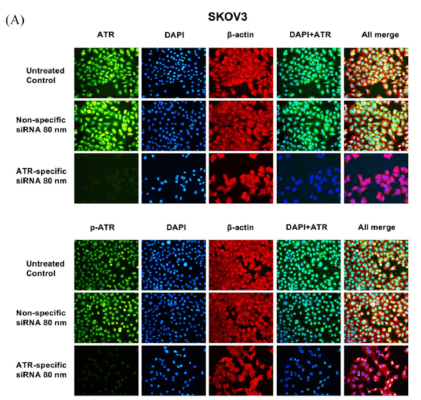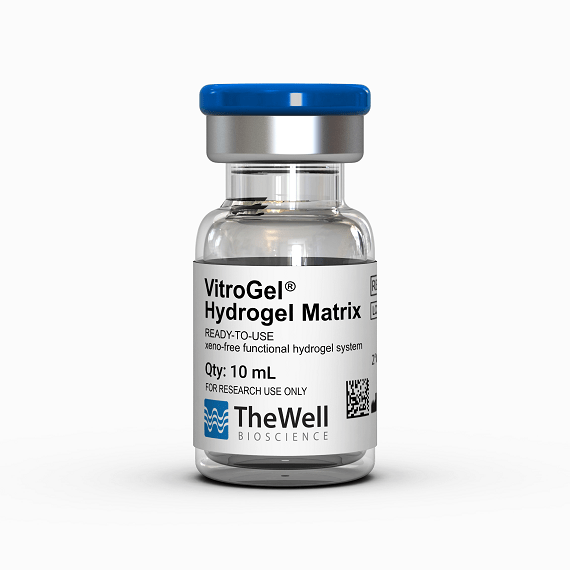Research Highlights
ATR and phospho-ATR ser428 (p-ATR) Expression in Ovarian Cancer Prognosis

Institution:


The First Affiliated Hospital of Zhengzhou University
David Geffen School of Medicine at UCLA
Team:
Wenlong Feng, Dylan C. Dean, Francis J. Hornicek, Jinglu Wang, Yanyan Jia, Zhenfeng Duan, and Huirong Shi
Application:
Studying the relationship of ATR and p-ATR in 3D ovarian cancer models
Disease Model:
Ovarian Cancer Cell Lines
Hydrogel:
VitroGel® 3D
Ovarian cancer accounts for 2.5% of all malignancies in females and is the leading cause of gynecologic cancer-related death. Currently, the standard treatment protocol for ovarian cancer consists of tumor debulking surgery followed by platinum–taxane chemotherapy, and (rarely) radiotherapy. Although a small proportion of patients may attain complete response, approximately 25% of these patients will develop platinum-resistant cancer recurrence within 6 months. At present, there are no reliable prognostic biomarkers in ovarian cancer and current therapeutic options are quite limited, especially after tumor recurrence. As a result, there is a dire need for biomarkers and novel therapeutic targets to advance ovarian cancer treatment. The researchers in this study studied the role of ataxia-telangiectasia and Rad3 related (ATR) in the prognosis of ovarian cancer as it has already been implicated in DNA damage response of various other types of cancer. ATR acts via its downstream to promote DNA damage repair and stabilization, as well as to restart stalled replication forks and transient cell cycle arrest. High ATR expression and activation were significantly associated with higher tumor stage, mitotic index, pleomorphism, lymphovascular invasion, and poor survival in a series of breast cancer studies. However, the expression of ATR, clinical and prognostic significance, biological functions, and the efficacy of its therapeutic targeting in ovarian cancer are unclear.
Feng and his colleagues examined ATR and phospho-ATR ser428 (p-ATR) expression in ovarian cancer patient specimens and correlated their expression to clinical prognosis. They used our hydrogel to evaluate how ATR is related to in vivo ovarian cancer cell growth, proliferation, and colonization. Their results showed that recurrent ovarian cancer tissues express higher levels of ATR and p-ATR than their patient-matched primary tumor counterparts. Elevated p-ATR is a prognostic biomarker of shorter survival in ovarian cancer. Likewise, knockdown and inhibition of ATR significantly reduces ovarian cancer cell proliferation and induces apoptosis. Targeting the ATR machinery is an emerging therapeutic approach in the treatment of ovarian cancer.
Read the publication:
Related Products:




